Nestled in the countryside of Anjou, the castle of Brissac (château de Brissac) is nicknamed the"giant of the Loire". Europe's tallest inhabitable château, with 7 floors, 48 meters in height and 204 rooms, it offers, with its 70-hectare landscaped park, a real immersion in the grandiose life of a family château.
In this article, come with us to discover the exceptional residence of the Dukes of Brissac: everything you need to know about the Cossé-Brissac house, keys to read the facades, a guide to enjoy the remarkable park!
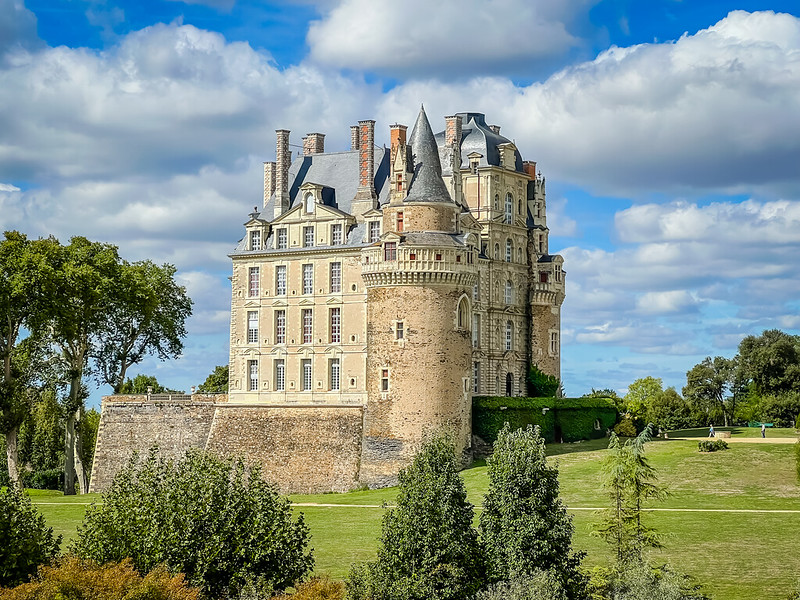
This guide is completely independent, based on our experiences. We visited the region anonymously, making our own choices and paying our bills in full.
Why visit Château de Brissac?
Is Château de Brissac worth it? Our opinion:
After our visit, we are convinced that the castle of Brissac is definitely worth a visit:
- for its impressive dimensions, with its monumental facades, beautifully enhanced by its natural environment;
- for its 70-hectare park so richly landscaped, a real invitation to meditation and poetry;
- because it is a living castle, inhabited by the same family for 5 centuries, who knew how to make it a place of pleasure, culture and sharing, despite its gigantism.
In our opinion, it's one of the most beautiful châteaux on the Loire, and one of the must-see castles around Angers.

Why is Château de Brissac famous?
At 48 meters high, Château de Brissac is one of the tallest castles in Europe, if not the tallest if you consider the habitable floors. To give you an idea, this corresponds to a modern 15-story building!
The castle, with its atypical ceiling heights, offers 7 levels of living space and 204 living rooms.

Having had the chance in a previous life to climb to the highest point of the castle, we can assure you that you can see the city of Angers even though it is 15 km away!
The castle is also known as a hot air balloon gathering place. It has twice hosted the European Championships, with no less than 120 aircraft flying from the park with the castle as a natural backdrop.
History in brief
- Middle Ages: the first fortified castle was built in the 11th century by the famous Count of Anjou, Foulques III, known as Foulques Nerra, who spent his life fighting to extend the borders of his county.
- Renaissance: the castle was rebuilt in 1455 by Pierre de Brezé, one of the heroes of the Hundred Years' War and an influential member of the government of the King of France, Charles VII. The castle was bought on May 26, 1502 by René Cossé, a gentleman from Anjou and Lord of Mayenne, whose descendants have been there ever since. They added the name of Brissac to that of Cossé by acquiring the title of Duke of Brissac in 1611, by decision of King Louis XIII.
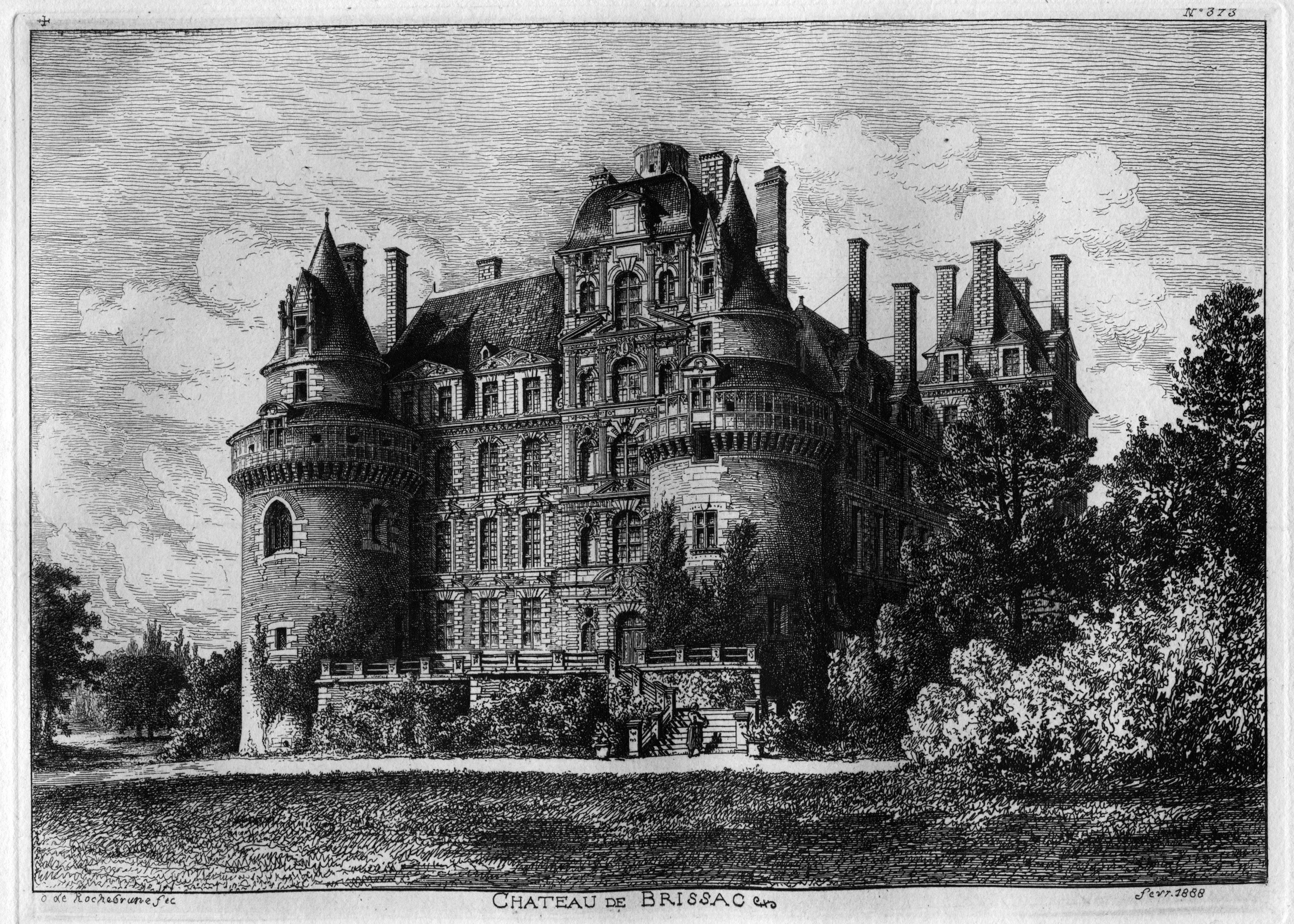
- Wars of religion: the château was severely damaged during the Wars of Religion in the 16th century, and was extensively rebuilt in 1606.
- Revolution: the castle was confiscated in 1792 and sacked. It became a barracks for the republicans (also called the "blues") engaged in the Wars of the Vendée. It will be restored by the Cossé-Brissac from 1844.
WHERE TO STAY IN Angers
Our favorites: neighborhoods and hotels
Downtown, to enjoy the city, its restaurants and beautiful architecture.
Hôtel L'Oisellerie - see photos and availability
Hotel 21, Foch - prices, pictures and availability
In the surrounding countryside, for greater peace and quiet
Hotel Château des Forges - see photos and availability

Tips and map - Azay-le-Rideau Castle
Where is Château de Brissac-Quincé
- Nearest town: Angers.
- Driving time from Angers: 20 minutes
- Driving time from Nantes: 1 h 20
- Driving time from Tours: 1 h 30
- Driving time from Blois: 2 h 00
- Driving time from Orléans: 2 h 40
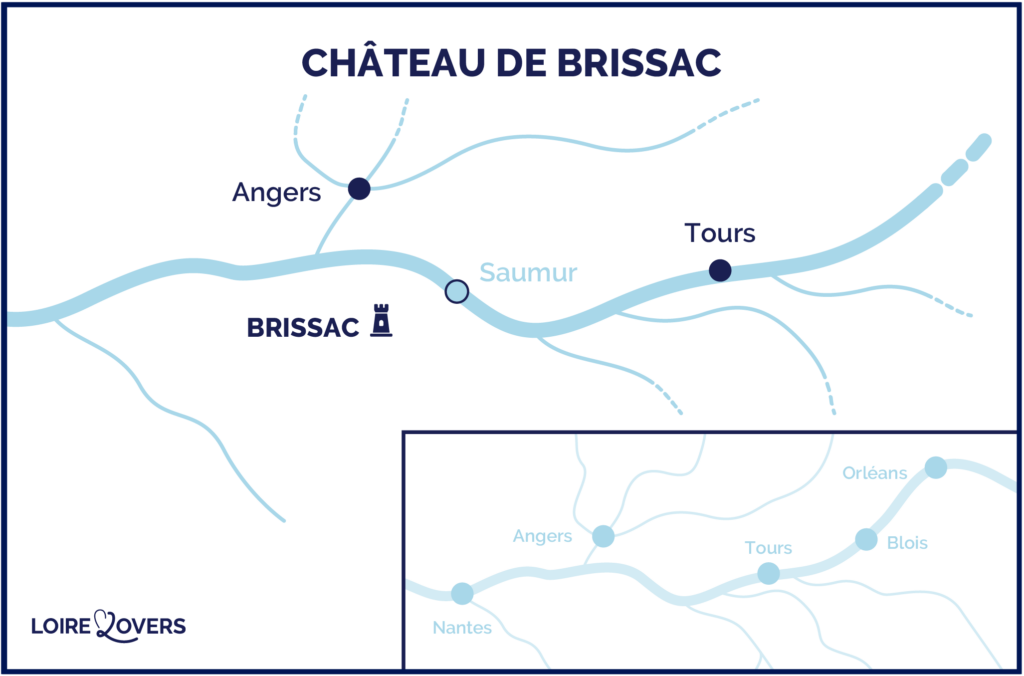
How to get there
To reach the castle, we recommend a car, as the castle is quite far from the main train stations.
You can also take the train to the TGV station in Angers (less than 1 hour and a half from Paris), and then take a bus, but you will have to juggle schedules to enjoy the visit.
OUR TIPS FOR RENTING A CAR IN Loire
- Compare prices on our preferred platform: DiscoverCars - one of the best rated sites.
- Choose a fairly compact car (many villages have narrowed the road).
- Think aboutfull insurance (parking in big cities is really tight).
- There is a lot of demand, book it early.
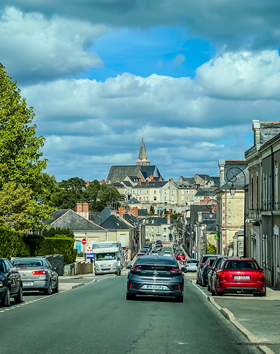
Parking
Parking is relatively easy near the castle and free. Located in an adjacent street 50 meters from the entrance of the castle, a municipal parking lot offers sufficient capacity, except for special events.

If you prefer, you can try to park in the village of Brissac, located slightly higher, and walk down (about 10') with the view of the castle.
Best time to visit Château de Brissac-Quincé
If you want to be captured by the beauty of the Park, we can only recommend you to go there in spring or early summer.
Please note that in winter (from November 14 to the beginning of March), it is only open during school vacations.
It is a private and family castle. Even if they have developed a real policy of welcoming the public, we are very far from the infrastructures of the great names of the Loire. The number of visitors is generally limited, but we advise you to book your guided tours in advance!
How long to visit the castle and main difficulties
No particular difficulty in the park. Slightly hilly and extensive, you can opt for a short or long walk, depending on your desires and your physical condition!
In the castle, a few steps to access the theater and to go down to the kitchens. The rest is on one level. Be careful with the ground to go to the underground which is rather slippery.
In terms of duration:
- 45 minutes minimum for the interior of the castle.
- 30 minutes for the tour of the exterior facades of the castle.
- 1 hour minimum for the park (stables, vineyards, theme walks).
Map of the castle and its park

Advice on how to visit
Given its extraordinary size, we advise you to start by taking some distance from the castle. Walk 200 to 300 meters away across the park lawns and turn around. You will be able to see the whole building at a glance and judge its size! An ideal location to capture this castle that is difficult to take a picture of!

Return to the castle and walk around it clockwise to admire the different facades that only open up to the eye if you allow time to pass.
Finish by visiting the interiors and the kitchen.
To regain your strength, take a well-deserved break at the tea room "Le pavillon des cèdres" located right next to the reception.
A LITTLE MORE patience
All the photos, maps, information, good addresses to make your stay in the Loire Valley a success, will soon be gathered in a single ebook!
If you wish to be informed of the publication of our guide on the Loire, register:
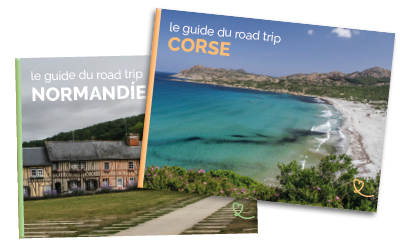
Castle of Brissac-Quincé with children
The Château de Brissac does not offer specific activities for children. However, the interior part being limited (9 rooms) and the exterior being vast, it can be a good initiation to the visit of the castles.
Schedules and prices
- In July and August: every day - 10am to 6pm
- From November 14 to March: during school vacations
- The rest of the year: every day except Tuesday - 10:30am to 1pm / 2pm to 5:30pm minimum
Rates :
- full adult: 11 €.
- child : 4 € for children from 8 to 16 years old
- Free for children under 8 years old
Check the latest prices/times on the official website
Guided tours
Guided tours lasting 55 minutes are offered to discover the facades and interior rooms.
To reserve your visit, click here!
Catering
- Le Petit Manoir in Saint Melaine-sur-Aubance: a very nice address at 5 minutes drive from the castle of Brissac. Chef Hervé, who has worked at Lenôtre and the Ritz, claims that his cuisine is "simple and generous". Special mention for the monkfish medallion with Cointreau (made in Angers) and fresh coriander. We recommend that you make a reservation by clicking here!

- If you want to stay in Brissac, you can opt for the 2 terraces, located in the bend going up to the village, facing the castle. A short menu, fresh and local products and a particular attention to organic or reasoned ! To learn more, click here!
- For a lunch on the go, always in Brissac, you can push the door of the canteen of the clem'. Everything is homemade with and the decoration is pretty cool! To get an idea, follow this link!
Where to stay in the area
- L'oisellerie: if you arrive by train, or plan to continue your stay in Angers, we strongly invite you to succumb to the charms of the oisellerie. Sleeping in a historic house with carved woodwork, in one of the oldest houses in Angers, beautifully decorated by two dynamic young women, is certainly prolonging the magic of the muffled atmosphere of the Château de Brissac! Discover our experience in pictures (coming soon) - Sleep historically well

- Loire & Sens in Juigné-sur-Loire: 10 minutes away from the castle of Brissac, an address well known by the Angevins, the stronghold of the Thioire. This house built on a former slate quarry, on the edge of a wood has been transformed after its purchase in 2012. The 4-star hotel now has an indoor pool, spa and fitness room. Calm, nature and comfort are the key words of this address. To see the pictures, click here!
- Hotel Rocaminori: 15 minutes from Brissac, an unusual experience awaits you in the heart of the village of Rochemonier. This 3 star hotel offers troglodyte rooms. These habitats dug in the Tuffeau rock did not leave us indifferent! Do you dare to be adventurous?
HAVE FUN WITH THESE activities

History : The Cossé-Brissac family
Owner of the castle since 1502, the Cossé family has linked its history to that of the castle of Brissac. Small portrait of this incredible family of the French nobility.
The Cossés were lords who owned several estates in Mayenne, with historical accounts dating back to the 11thcentury . Following Jeanne de Laval,2nd wife of King René d'Anjou, they arrived in Anjou in the mid-15th century.

On May 26, 1502, René de Cossé acquired the castle of Brissac. His eldest son, Charles I de Cossé, a French soldier and aristocrat, was a child of honor to the son of François I and his first squire. He was the first Cossé to be elevated to the rank of Marshal of France in 1550 by Henry II, one of the highest military titles in the Kingdom.
René Cossé's grandson, Charles II de Cossé, sided with the Catholics during the Wars of Religion that bloodied France in the 16th century. As a reward for his fighting, King Louis XIII granted him the title of Duke of Brissac in 1611. The family will carry from now on, the name of Cossé-Brissac (House of Cossé possessing the title of Duke of Brissac to be precise).

The Cossé-Brissac family will give to France 4 marshals, generals, governors of Paris and 3 bishops! Its motto will be"Virtute Tempore", which can be translated as "Courage and time", which applies well to the preservation of a castle of this size!
The castle is now occupied byDuke Charles-Andre and Duchess Larissa de Brissac and their 4 children.
Charles André de Cossé-Brissac, who became the 14th Duke of Brissac on the death of his father on April 6, 2021, is a true lover of heritage and is well known to many residents of Brissac and the surrounding area, who affectionately call him by his first name. Perhaps a survival of the ancestral lordships!
Architecture: atypical monumental facades
As we said, the castle of Brissac is distinguished by its gigantism, sometimes a little invasive. Let's take a closer look at the atypical architecture that gives it its charm.
- The 2 round side towers were built in 1455 by Pierre de Brezé who had acquired the castle 20 years earlier. But they seem to be strangely attached to the rest of the castle...


- Although they were to be destroyed during the reconstruction of the castle in 1606 following the Wars of Religion, they were finally preserved by the successors of Charles II de Cossé, who died in 1621, before the end of the work. As with many castles in the Loire Valley, the death or lack of funding of the builders sometimes had serious architectural consequences.

- The rest of the main façade, known as the Levant façade, was built in the 17th century. It is directly inspired by the baroque style, then in vogue in Europe. Jacques Corbineau was the architect (he was also responsible for part of the work on the Parliament of Brittany and the Cathedral of Nantes). In its initial design, the facade was to be composed of 3 parts: a large pavilion, also called a keep, on 5 floors, surrounded by 2 lower pavilions. The death of the1st Duke of Brissac will also be fatal to the right pavilion, unbalancing the whole architecture of the facade and having as a consequence to decenter the entrance door of the castle! Take the time to look at the details of the "keep", its numerous niches and sculptures, its interrupted pediments above the windows... A real baroque madness, reinforced by these half-demolished towers!

- Much less worked, the south and west facades breathe a little thanks to the terrace of Bonnivet which breaks the monotony of the windows in tufa.

- Without question, the most austere facade of the castle, the northern facade which rises over 7 floors overlooking the river Aubance.

Subscribe to our Newsletter
- Get away from it all with Region Lovers' beautiful destinations!
- Once a month
- Advertising-free
A poetic park
Don't leave Château de Brissac without taking the time to stroll through the landscaped and agricultural grounds .
This park has the particularity of beingirrigated by the Aubance river which feeds theMontayer stream and its ponds. It is thus a landscape of water and nature which offers itself to us for our greatest pleasure.
Themed walks in the park
The family of Cossé-Brissac, offers 5 theme walks to explore the park:
- Gilles' walk (20 minutes): walk around the lawns and enjoy beautiful views of the castle. The collection of landscape roses is a tribute to Gilles de Brissac, landscape designer of the Apremont floral park, a remarkable garden that can also be visited in the neighboring Cher department.

- Walk to the Mausolée des ducs (30-minute round trip): this small neoclassical temple with pronaos (vestibule) was built in the early 19th century and houses the tombs of the dukes and duchesses of Brissac. Quite surprising and offbeat, but a nice place for a last rest!

- Red Bridge Walk (40 minutes round trip): walk along the Montayer stream and enjoy its ponds. You will go from bridge to bridge in a soothing and rejuvenating atmosphere.

- Jeanne Say Waterfall Walk (1h10 minutes round trip): you continue down the stream alongside Jeanne Say, Marquise de Brissac, and creator of the park in 1880, with the help of landscape designer Pierre-Auguste Killian.

- Walk in the old vegetable garden (20 minutes): this walk offers you to discover the part of the park which sheltered the vegetable garden designed by the famous Angevin nurseryman André Leroy in 1850.

The stables

Located not far from the château, they feature a number of naturalistic scenes with stuffed animals, as well as a reproduction of a saddlery, paying tribute to the 13th Duke of Brissac, who presided over the prestigious Jockey Club for 17 years.

The vines
The estate's vineyards cover 26.5 hectares, the origins of which may date back to the creation of the very first château. The grape varieties grown are Cabernet Franc, Grolleau and Gamay and the grapes are harvested, vinified and bottled directly at the château. Among the AOCs produced, the most local of all is Anjou Village Brissac!

To celebrate the 500 years of the Cossé family's presence at the Château de Brissac, a half-hectare of vines, called the"vine of five centuries", was planted between the mausoleum and the château.
You can taste the wines during your visit, under the stone vaults of the castle's cellar.

DON'T MISS THE BEST CASTLES IN the Loire Valley
- The most beautiful castles of the Loire Valley
- The most beautiful gardens
- Where to stay in the Loire castles: unforgettable hotels!
- The best Loire castles to visit with your family
- Castles you can visit with a dog
- Chambord or Chenonceau: our comparison
- itineraries: weekend - 3 days - 4 days - 5 days - 1 week
- Castles around Blois, around Amboise, around Saumur, around Tours, around Angers and around Nantes.
- or our list of over 100 Loire castles

Is the castle of Brissac really haunted?
This is a very interesting question... Let's investigate!
- Charlotte de Valois is one of the 3 illegitimate daughters born from the affair between Charles VII and his favorite (official mistress) Agnes Sorel. She was born in September 1446 in Raures.
- On March1, 1462, this beautiful blonde woman married Jacques de Brézé, Count of Maulévrier and builder of the castle of Brissac. It is an arranged marriage for political reasons. At that time, unions were the best way to increase one's power and territory. While the husband prefers outdoor activities, including hunting, she enjoys a more intellectual and sophisticated life.
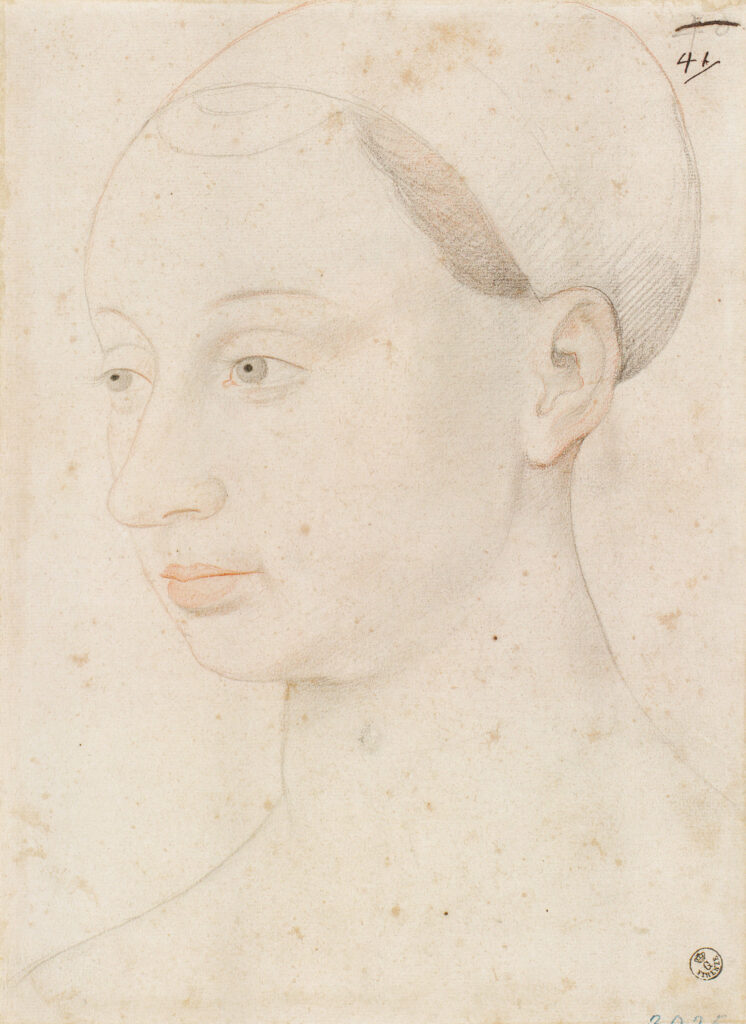
- At that time, husband and wife were systematically separated. The bed of the husbands was always narrower than that of the wives; it was indeed the husband who decided to join, or not, his wife at night!
- On the night of May 31 to June1, 1477, James returned from a hunting trip, had dinner with his wife and retired to his apartments. Shortly afterwards, warned by one of his servants, he caught his wife in the midst of an adultery with Pierre de Laverne, a friend and squire at the castle. He pierces them with his sword or his knife, the testimonies diverge on this point.
- Charlotte de Valois, who died at the age of 31, is buried in the choir of the abbey of Coulombs.
- On certain stormy nights, one hears cries in the castle that are reminiscent of the cries of fear uttered by the unfortunate woman. Is she one of those famous"White Ladies" who like to haunt the castles of France and even Europe?
Mystery... The investigation continues to get to the bottom of this "cold case"!
DISCOVER Angers
- Things to do in Angers
- Where to sleep in Angers: best hotels
- Where to eat in Angers: best restaurants
- Rent a car in Angers
- Visit the Château d'Angers
- Visit the Museum of Fine Arts in Angers - coming soon
- Château de Brissac
- Terra Botanica
- Best castles around Angers
- Most beautiful villages around Angers

Interiors: diving into the daily life of the Château de Brissac
Through an itinerary that will take you through 13 of the 204 rooms of the castle, discover the daily life of the castle through the centuries. A small selection of our favorite pieces:
- the large gilded salon with its remarkable carved coffered ceiling.

- The dining room with its orchestra stand painted in the style of marble, designed by Jeanne Say. This rich heiress of sugar manufacturers had become Marquise de Brissac by her marriage. A free-spirited woman who passionately traversed the second half of the 19th century, she cultivated her gifts as a music lover and singer throughout her life.

- The large gallery, 32 meters long, which could seat up to 200 guests. Once again the painted ceiling, composed of 110 different paintings, amazed us. A small nod to the occupying family, with the bronze sculpture "The Child Gardener" created by the New York artist Martine VAUGEL, who took as her model Lazslo, the eldest son of Charles-André De Brissac!

- The hunting room, with its remarkable tapestries woven near Brussels in the late 16th century. They represent the different hunting practices and their respective game.

- Certainly one of the most impressive and unusual parts of the castle, the 200-seat theater, nestled in the heart of the castle. We owe it once again to Jeanne SAY who did not shrink from anything to feed her passion for music. In 1890, she had this Belle Epoque style theater built, arranged on 2 floors, and its adjoining foyer. It welcomes the finest Parisian artists to perform the best of the new wave ofopera composers (Gounod, Saint Saëns, Offenbach, Wagner...). Recognized for her talents as a pianist and organist, but also as a singer, she did not hesitate to join her singing friends on stage, as shown in the re-enactment.


- Change of atmosphere with the fortified rooms that you will reach after having descended some steps. Perhaps you will come across the ghost of Charlotte de Valois!

Not to be missed nearby
In the heart of the Anjou countryside, you want to complete your day of visit after the castle of Brissac, we advise you:
- The troglodytic village of Rochemenier and its museum: occupied since the Middle Ages (13th century), these dwellings were carved out of a limestone rock known as fallun. The site offers a visit to two of the forty farms that made up the village and its incredible network of underground ramifications. Through everyday objects and numerous photos, you'll discover the life of the last occupants of the site, abandoned only at the beginning of the 20th century. We are far from the splendor of the castle of Brissac! Discover our visit guide and our pictures (coming soon)

- Château de Montreuil-Bellay: if you want to continue in the castle spirit, but change of time and universe, we recommend you the castle of Montreuil Bellay located only 30' from Brissac. The road is all the more pleasant as the countryside is particularly beautiful as you approach Montreuil-Bellay. The medieval castle has acquired over the course of battles the reputation of an impregnable fortress with its 15 defensive towers and its formidable dry moat. See our tips and photos for a successful visit to the castle of Montreuil-Bellay (coming soon)

Frequently asked questions
Is it possible to reserve the Château de Brissac for a wedding or a private event?
Yes, the castle can be privatized for all types of events: weddings, corporate events... With a capacity of 10 to 300 guests, it will offer an unforgettable experience to your guests.
Have there ever been any films, series or TV shows filmed at the Château de Brissac?
Yes, the castle has already been used as a film location:
- For the program"Secret d'histoire" devoted to Madame du Barry and for the one devoted to Marie de Médicis. This program, hosted by Stéphane Bern, has been broadcast since 2007 on French public television, and is a reference for historical documentaries in France.
- For season 4 of the documentary series"The War of the Thrones, the true history of Europe" dedicated to the reign of Louis XIV.
PLAN YOUR TRIP IN
Loire Valley
The castles of the Loire Valley

Other places to explore






